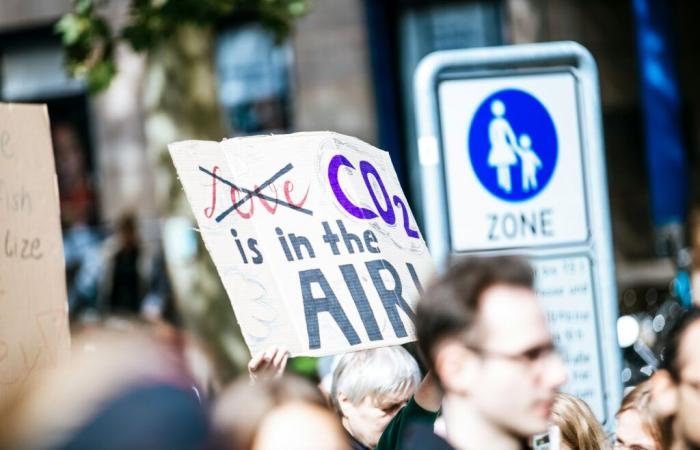As the COP 29 on climate opens in Baku, INSEE publishes a document (Insee Analyses, n° 98, November 2024) to, on the one hand, establish a state of greenhouse gas emissions (GHG) of France and its carbon footprint, and, on the other hand, propose an indicator reflecting the consideration of costs incurred by these broadcasts.
On the same subject: “Events like COP 29 do not bring profound political transformations”
In 2023, France emitted 403 million tonnes of GHG in carbon dioxide equivalent (Mt CO2 eq) in respect of the economic activity of agents residing in the territory. And its carbon footprint, including the balance of emissions contained in its imports/exports, is 644 Mt CO2 eq.
Per capita, this corresponds to 5.9 tonnes of CO2 eq emitted and a footprint of 9.5 tonnes. Compared to the level reached in 2018, national emissions fell by 15% and the carbon footprint by 8.5%. But, by comparing this result to the objectives of the 2020 national low carbon strategy, the authorized emissions ceiling was exceedsto the point that the allocated “carbon budget” is reduced by 123 Mt CO2 eq to be able to achieve carbon neutrality in 2050.
On the same subject: Defuse carbon bombs
How to record this in the national accounts? Starting from the annual GDP from which we subtract the depreciation of fixed capital, we obtain the NIP (net domestic product). INSEE then deducts from this the social cost of damage due to GHG emissions to arrive at an adjusted PIN. The question then arises: how assess the cost of this damage which is not given on any market? This is where the sands become shifting.
Counting, even by ‘adjusting’, is not decarbonizing.
The Quinet report (2019) gives an estimate of the “climate action value”, which is the value that society decides to allocate to actions making it possible to avoid the emission of one tonne of CO equivalent.2. The Quinet report sets it at €250 for 2030 and €775 for 2050. It follows that the adjusted PIN in 2023 is reduced by €93 billion compared to the PIN, and by €33 billion more if we extend it to deleterious effects on health and mortality. INSEE concludes that national savings in 2023 of €68 billion are reduced by €144 billion; then, we transmit to the future a negative adjusted net savings of -133 billion, and even, by extending it, of -264 billion.
On the same subject: Carbon-free growth or degrowth?
Can we be happy to have such indicators? At first glance, yes. But behind this, there are numerous difficulties, even methodological flaws. The cost calculation is derived from comparisons between costs and benefits and between costs and effectiveness. We therefore cannot escape the difficulty of giving a price to the degradation of our environment, which we can only really estimate by the cost of repair if possible.
Roughly speaking, the repair generates an increase in the PIN which is reduced by the amount just added. All this reminds us that the accounting aggregates are monetary, and integrating a priori non-monetary elements does not in any way reduce ecological degradation. Counting, even by “adjusting”, is not decarbonizing.
Receive Politis at your home every week!






